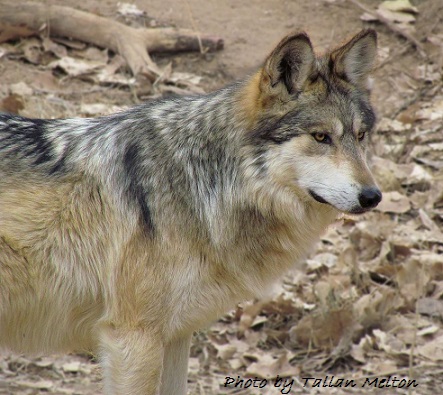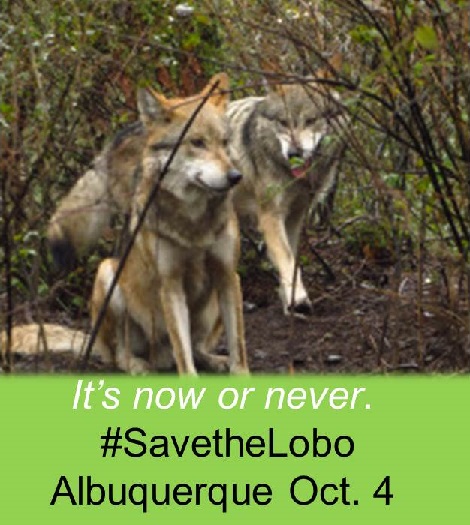Op-ed: Mexican gray wolf: Where the wild things aren’t
 When I was the director of the U.S. Fish and Wildlife Service, I was fortunate enough to take part in the release of 11 Mexican gray wolves into Arizona’s Apache National Forest in 1998. I will never forget the light in their eyes as we released the lobos from the confines of their crates, destined for a new life in the wilderness where they belong. This came after we had worked hard to restore wolves to the Yellowstone region just a few years before.
When I was the director of the U.S. Fish and Wildlife Service, I was fortunate enough to take part in the release of 11 Mexican gray wolves into Arizona’s Apache National Forest in 1998. I will never forget the light in their eyes as we released the lobos from the confines of their crates, destined for a new life in the wilderness where they belong. This came after we had worked hard to restore wolves to the Yellowstone region just a few years before.
Back then, our hopes were certainly high for these icons of American wilderness.
Recently, however, the thrill of seeing gray wolves returning to the Southwest and across the country has been tainted by the fact that the Fish and Wildlife has announced its intention to abandon wolf restoration before the job is done. Wolves are still not recovered in suitable habitat in Colorado, the Pacific Northwest and California—wild places that can offer a good home to this iconic species. In fact, wolves only occupy about 36 percent of currently suitable habitat nationwide.
Delisting gray wolves across the nation is premature and will negatively impact the species’ long-term recovery, but unfortunately, this is not the worst of it for America’s wolves. Another of the Fish and Wildlife’s recent proposals makes it almost impossible for the lobo to ever recover — putting this rarest wolf on the path to a second extinction in the wild. While the imperiled population of only about 75 individuals will remain on the endangered species list, the service’s proposal for its continued management makes the future for these wolves look dim.
If the lobos are going to survive, they need much more than a “smoke and mirrors” plan that, by ignoring science and good sense, obstructs the path to recovery.
Real recovery of Mexican gray wolves will require the completion and implementation of a recovery plan that incorporates updated science, the release of new breeding pairs into the wild and the establishment of at least two new core populations. And herein lays the proposal’s gravest sin: the most suitable areas of habitat in the southwest are in the Grand Canyon region and northern New Mexico/southern Colorado — beyond the new arbitrary land borders the proposal sets up for wolves. Fish and Wildlife knows that the lobos desperately need access to these areas, so why has it proposed a plan that does the opposite; effectively ensuring the lobo will never recover?
Recent polls have shown that residents of Arizona and New Mexico strongly support the restoration of Mexican gray wolves — in fact, 87 percent of voters in both states agree that wolves are a vital part of our heritage. Eight in 10 voters agree that Fish and Wildlife should make every effort to prevent extinction, with more than seven in 10 in Arizona and nearly as many in New Mexico agreeing that wolves should be restored to suitable habitat in the region.
As the people concur, lobos are indeed iconic animals, and beyond that, they are crucial for healthy ecosystems.
But despite the ecological and cultural significance of the wolves and the importance they hold in the eyes of the public, it seems that our government doesn’t really want to hear what the people have to say about finishing the job of lobo recovery. With only one hearing to take public comments on the fate of the Mexican gray wolves scheduled for the whole region, we have to find as many opportunities as possible to speak out for the lobos before it is too late.
I don’t want to visit Arizona and New Mexico, Colorado and Utah in the years to come and have to accept that these are places where the wild things used to roam.
I don’t want to stand on a ridge in the Grand Canyon straining to hear a howl that will never come.
I want to remember the beautiful eyes that I saw in the Apache National Forest and know that the lobos are alive and well, running freely not just there, but across the region that was their home before it was ours.
Jamie Rappaport Clark is president of the Defenders of Wildlife.
********************************************************************************************************************************************************************************************************
Please write a letter to the editor of the Arizona Daily Star expressing your support for Mexican wolves and thanking them for printing this Op-ed.
The letters to the editor page is one of the most widely read, influential parts of the newspaper. One letter from you can reach thousands of people and will also likely be read by decision-makers. Tips and talking points for writing your letter are below, but please write in your own words, from your own experience.
Letter Writing Tips & Talking Points
- Scientific experts have long said that the Grand Canyon region and the southern Rockies contain some of the last best places for wolves. So why won’t the USFWS plan allow for wolves to disperse into these areas? Capturing dispersing wolves is dangerous for the individual wolves and detrimental to the overall well-being of the species.
- The US Fish and Wildlife Service’s proposal could doom Mexican wolf recovery. Everyone who cares about saving these beautiful, intelligent, native animals should write comments or attend the hearing in Albuquerque.
- Wolves once lived throughout Arizona and New Mexico and played a critical role in keeping the balance of nature in place. We need to restore this important animal that has been missing for too long.
- At last official count, only 75 Mexican gray wolves, including only 3 breeding pairs, were found in the wild. The wild population of Mexican wolves is at tremendous risk due to its small size and genetics. It is unacceptable that the US Fish and Wildlife Service is proposing changes that will result in more wolves being killed or removed from the wild.
- Mexican gray wolves are unique native animals. They are the rarest, most genetically distinct subspecies of gray wolf in North America and the most endangered wolf in the world
- Polling showed 87% of Arizona and New Mexico voters support the Mexican wolf reintroduction. The USFWS needs to have a public meeting in Arizona about this rule to help Arizonans understand what they are proposing.
- When we give the wolves our best, they return the favor in the form of healthier lands. They are Nature’s wildlife managers. Wolves are a benefit to the West and are essential to restoring the balance of nature. Wildlife biologists believe that Mexican wolves will improve the overall health of the Southwest and its rivers and streams — just as the return of gray wolves to Yellowstone has helped restore balance to its lands and waters.
- Wolves also generate economic benefits – a University of Montana study found that visitors who come to see wolves in Yellowstone contribute roughly $35.5 million annually to the regional economy.
Make sure you:
- Thank the paper for publishing the article.
- Include something about who you are and why you care: E.g. “I am a mother, outdoors person, teacher, business owner, scientific, religious, etc.”
- Provide your name, address, phone number and address. The paper won’t publish these, but they want to know you are who you say you are.
- Submit your letter here.

Submit comments on the US Fish and Wildlife Service Mexican gray wolf proposal.
For information on the Save the Lobo event and US Fish and Wildlife Service hearing in Albuquerque on October 4, click here.
Thank you for speaking out to save Mexican wolves!
________________________________________________________________________________________________________________________________________________
Click here to join our email list for Mexican gray wolf updates and action alerts.
Visit us on Facebook here.



